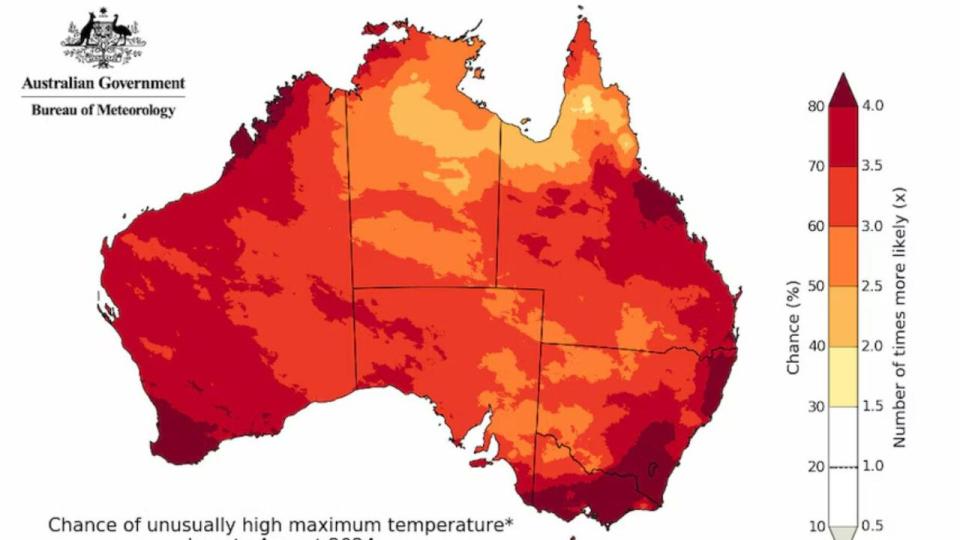Record set to be broken this winter

The Bureau of Meteorology has forecast one of the warmest winters on record for most of Australia.
Minimum temperatures are likely to be above average for most states from May to July, according to the latest long-range weather forecast published by the bureau on Thursday.
The temperatures threaten to surpass last year’s benchmark as the warmest winter since records began in 1910.
Average daily temperatures were 1.53C above the long-term winter average in 2023, according to bureau data.
Every winter since 2012 has been warmer than the 30-year average.

Most of Western Australia, Tasmania, the northern two-thirds of the Northern Territory, northern and eastern Queensland, eastern NSW, and southern and eastern Victoria are set for higher winter temperatures.
“Unusually high” temperatures have a 50 per cent chance of developing during May in the western half of WA and parts of northern and eastern Queensland.
Days that are deemed “unusually high” are defined as the warmest 20 per cent of May to July nights
Maximum temperatures are also likely to be above average for most of Australia except the Carpentaria and Daly districts of the NT.

Most of the country will experience temperatures of about one to two degrees above average.
Below average rainfall in most parts
In May, rainfall is likely to be below average for most of Australia, excluding parts of the east and western WA, where there is an equal chance of below and above median rainfall.
In northern Australia and small parts of southern Australia from May to July there is a very likely chance of below average rainfall.
In scattered parts of eastern and central Australia, as well as the western Gascoyne region of WA, there is a likely chance of above average rainfall.
However, the chance of a La Nina developing in the coming months could change this forecast and increase the likelihood of a wet winter.
The long-range forecast is influenced by several factors, including record warm oceans globally and a decaying El Nino.


